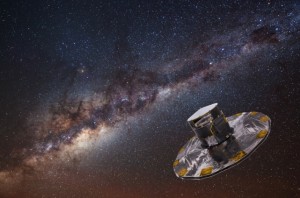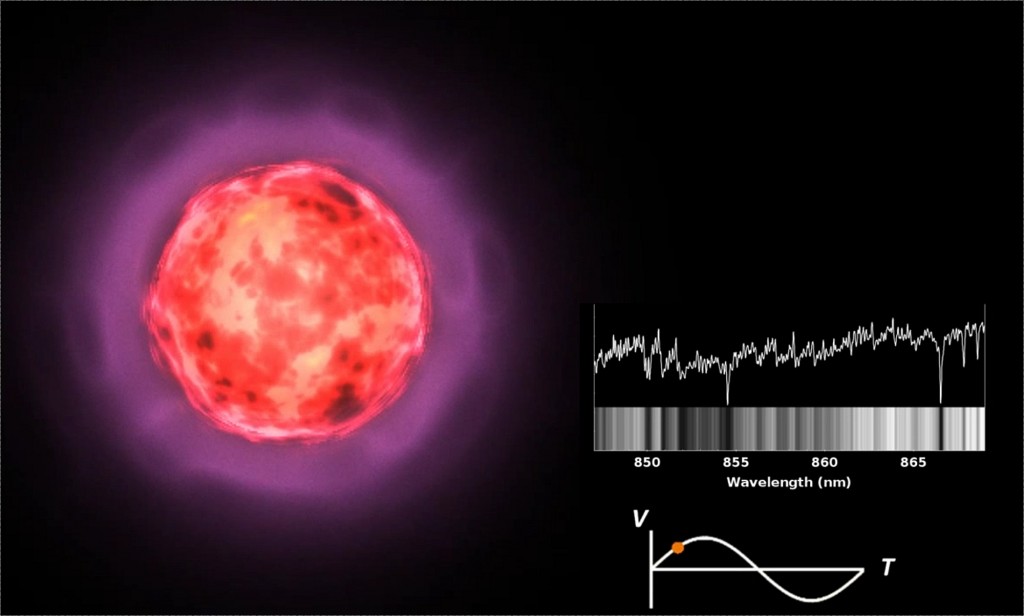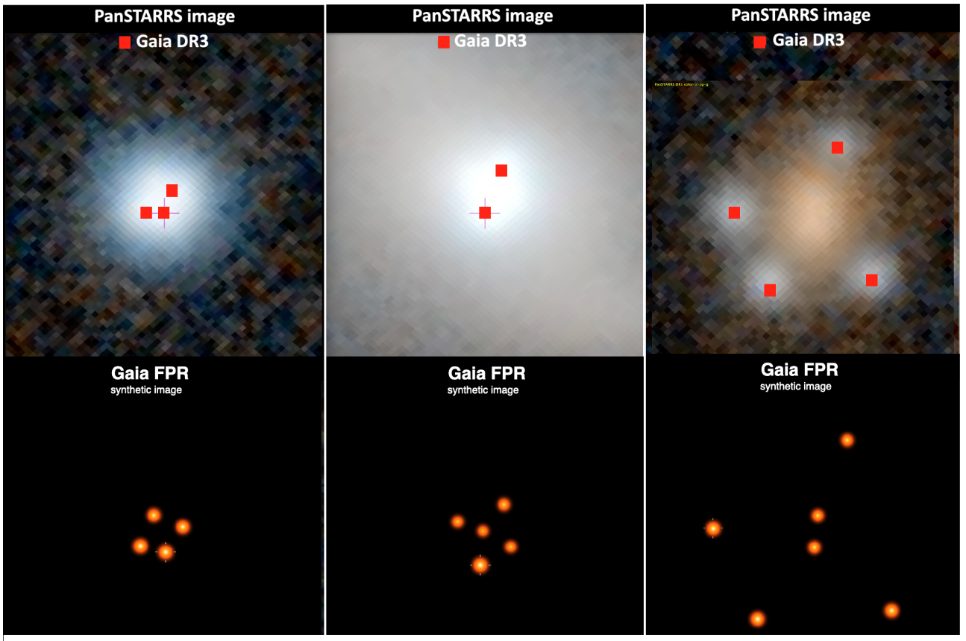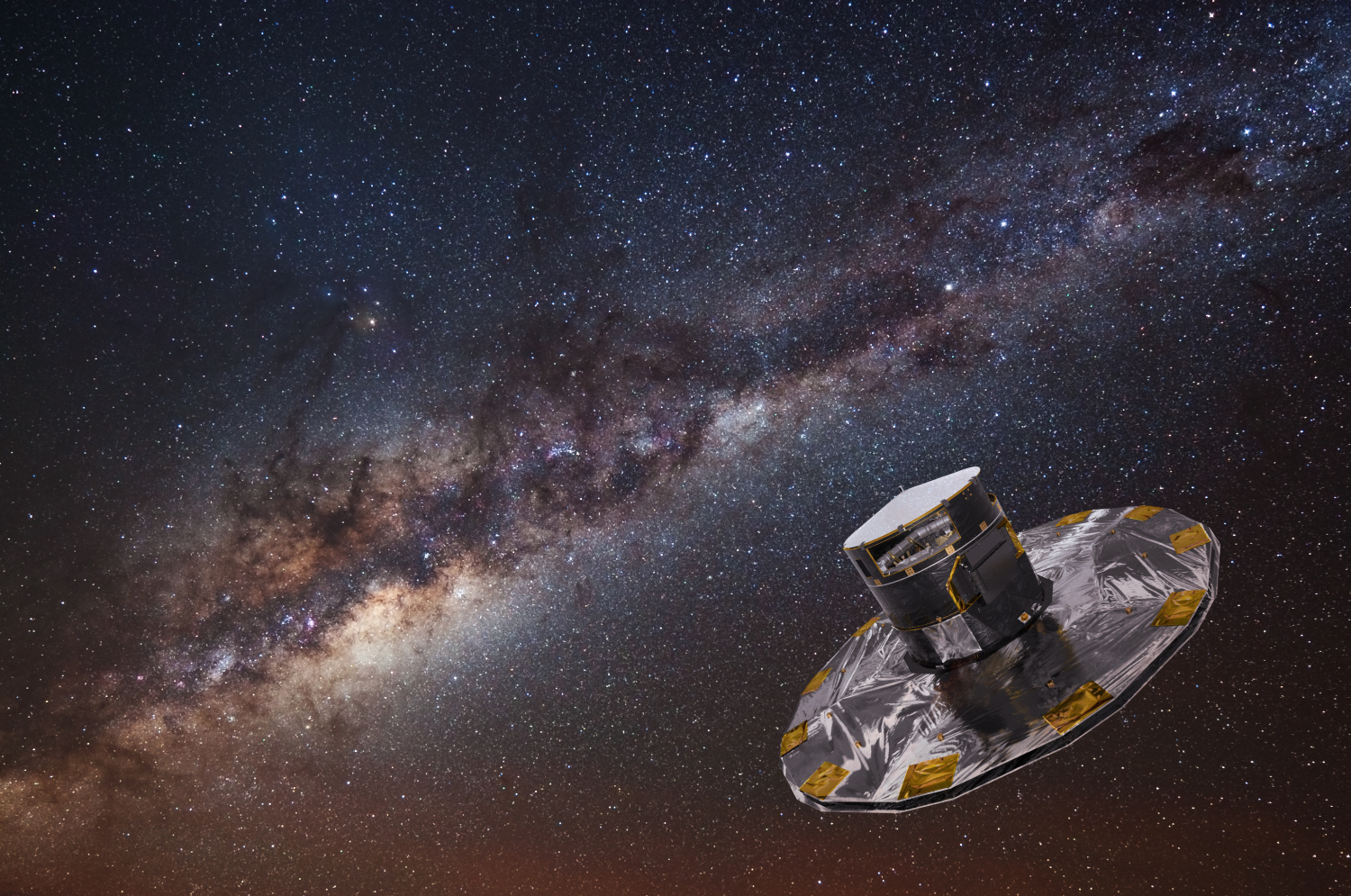Building the most detailed 3D map of the Milky Way: Belgian astronomers contribute to the Gaia Focused Product Releases
Brussels, 10 October 2023 – Today the European Space Agency (ESA) and the Gaia collaboration teams are publishing new data in the form of five Focused Product Releases. The results are very promising, making of this delivery a first teaser of what will be the fourth version of the Gaia catalogue (Gaia DR4), expected by the end of 2025.

Artist’s view of the Gaia satellite in front of the Milky Way. Image credit: ESA/ATG medialab – ESO/S. Brunier.
The Gaia satellite has been charting the sky since 2014, and its map includes stars that are a million times fainter than can be seen with the naked eye. Published in June 2022, the third version of the most complete and detailed catalogue of stars (Gaia DR3) is a milestone in astrophysical research. Gaia’s exceptionally accurate distances, motions and fundamental parameters of stars, as well as the classification of quasars and the accurate astrometry of asteroids are now part of the everyday work and research of most astronomers.
One of the showpieces of the newly released data is the globular cluster Omega Centauri. The cluster contains about 10 million stars very densely packed on the sky, challenging Gaia to resolve them. In view of Gaia DR4, various techniques are foreseen to process the data in the densest and most interesting regions. The reprocessing of the Omega Centauri cluster allowed recovering the astrometry and photometry of 526 587 more stars located in its core.
While Gaia observes the same stars several times and at different epochs, until now ESA only published averaged measurements. It did not prevent Gaia to identify variable stars, but characteristics such as their instant photometry and radial velocities used in the classification process are not published, yet. As we await Gaia DR4 where all observations (epoch and averaged) will be available, a partial publication of the highest quality time series of data acquired for 9164 Long Period Variables is part of these Focused Product Releases, and will help the scientific community to prepare for the wealth of data Gaia will deliver in 2025.

The ESA-Gaia spacecraft has repeatedly observed the spectrum of an unprecedented amount of cool giant stars – called Mira variables – known to continuously expand and contract their surfaces over long periods, sometimes of more than one year. This artist´s impression of a Mira star shows how the velocity of the surface movements and of its atmosphere are accurately measured from the (Doppler) shifts of dark lines observed in the detailed Gaia spectra. A video animation is at: http://aa.oma.be/GaiaFPR_en.
The space between stars is not completely empty. It is filled by low-density gas made of atoms, ions and molecules as well as by dust. This interstellar matter absorbs and scatters the light, producing a continuous reddening and weakening of the stellar flux. Additional broad features, named Diffuse Interstellar Bands, also appear in the spectra of stars. They are due to absorption likely associated with very complex molecules found in the interstellar medium in certain directions. Such Diffuse Interstellar Bands are present in the Gaia Radial Velocity Spectrometer’s wavelength range and are used to trace its formation in the Milky Way disk and its spiral arms.

For three gravitationally lensed quasars (from left to right: H1413+117, J2240+0321 and J1310-1714), we show in the top row the Gaia DR3 positions (without special treatment of the quasar environment) plotted over ground-based PanSTARRS images. The bottom row shows synthetic images reconstructed from Gaia’s Focused Product Release (with quasar environment analysis implemented). Observations taken from ground can be a bit blurry, due to the atmosphere. With Gaia’s exceptional resolution, these images of the gravitationally lensed source are resolved. Credits: “Gaia Focused Product Release: A catalogue of sources around quasars to search for strongly lensed quasars” by Gaia Collaboration, A. Krone-Martins , et al. 2023.
For further information, see the story line: https://www.cosmos.esa.int/web/gaia/fpr-gravitational-lens-search.
At one end of its distance scale, near the limit of our observable universe, Gaia detects quasars. In the sky, some of these can be very close to a massive galaxy and have their light path bent by the galaxy’s gravitational well, as if it went through a lens. The lensing phenomenon produces a gravitational mirage that can be used to directly estimate the age and the expansion rate of the Universe. During the last months, Gaia teams identified 381 new candidate lensed quasars and mirages.
At the other end of the distance scale, Gaia teams reprocessed 156 764 asteroids, but using 66 months of data rather than the 34 months of Gaia DR3. Thus, the observations of most main-belt asteroids now cover a complete revolution around the Sun, closing the orbit, leading to a dramatic increase in the accuracy of the orbits.
The expertise of the astrophysicists from the KU Leuven, Royal Observatory of Belgium, Université libre de Bruxelles, Universiteit Antwerpen and Université de Liège plays an important role in the processing and analysis of Gaia data in general, and in the implementation of the focused product releases in particular. They are supported in their efforts by the Belgian Federal Science Policy Office (BELSPO) via the PRODEX Programme of ESA. In addition to providing new data to complement the third version of the Gaia catalogue, the Focused Product Releases are a proof-of-concept of various new features implemented in the data analysis pipeline producing Gaia DR4 with twice more data. They offer a necessary and useful overview of all the promises that the fourth version of the catalogue will fulfil.
Additional information:
- Gaia Focused Product Releases: https://www.cosmos.esa.int/web/gaia/focused-product-release
- Gaia for the public: https://www.esa.int/Science_Exploration/Space_Science/Gaia
- About Gaia DR3: https://www.cosmos.esa.int/web/gaia/data-release-3
- Gaia Data Release scenario: https://www.cosmos.esa.int/web/gaia/release
- Belgian Federal Science Policy Office (BELSPO): https://www.belspo.be/belspo/space/esa_science_en.stm

